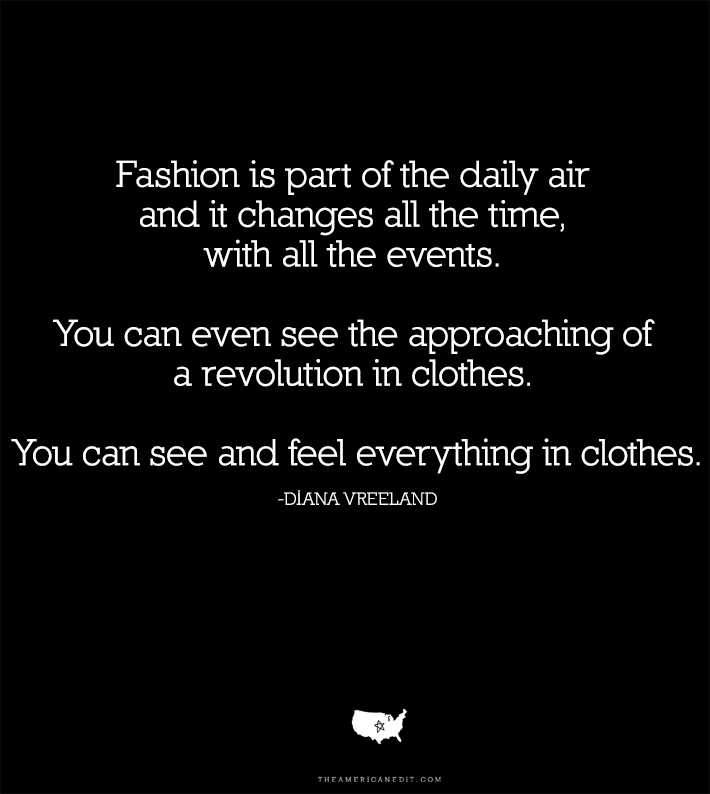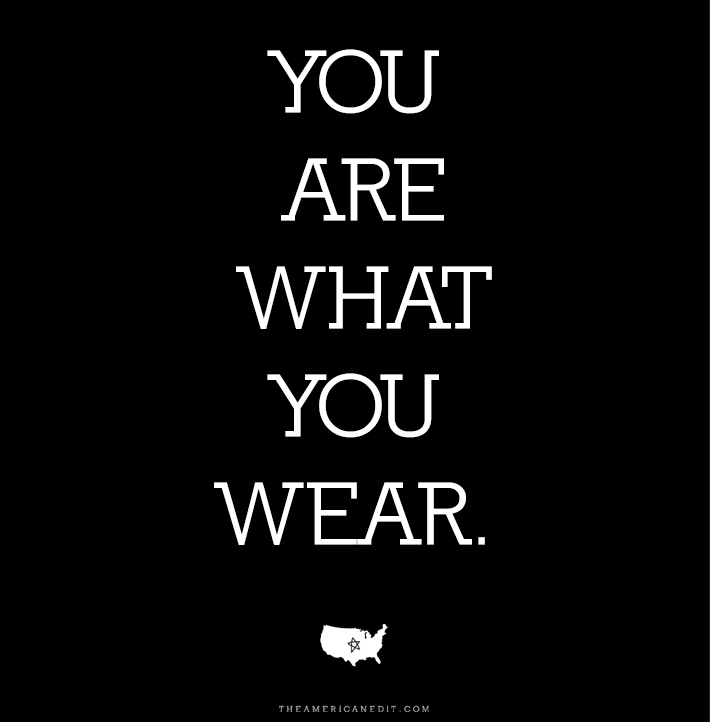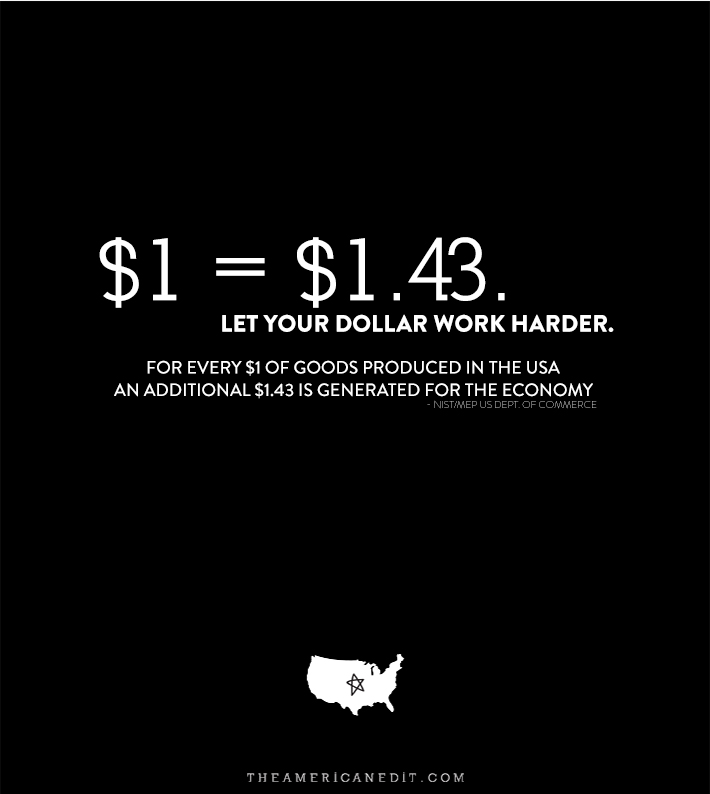I’ve been working on this project for almost a year… and as much as I believe in quality over quantity, and buying American-made, I often doubted myself – would anyone actually read this? Can you really combine style and conscientiousness and ethics? There are so many issues that matter, is this really important?
Leave it to the Diana Vreeland and some of my favorite magazines, bloggers, and entrepreneurs to remind me just how important this really is…
Design for Mankind I Foresee a Closet Cleanout
But what I don’t love is the headspace and energy and wastefulness that surround a closet that is – literally – spilling out of itself. I don’t love the uselessness of it all, the endless combinations of wardrobe options and choices and decisions that we were never created to focus on. Why does it matter?
Garance Dore My 5 Commandments of Style
#3 – Quality = Longevity
Vogue The Price of Cheap
We get what we pay for, as they say—but with a twist. When we buy cheap, we may save a few dollars, but the cost goes elsewhere, and eventually cheapness comes back to haunt us.
Zady
Zady began with a grand vision: to combat the fast-fashion craze by providing a platform for only those companies that care about timeless style and solid construction.
Cuyana
A lean closet enables a fuller life- for ourselves and for others. Our Lean Closet movement challenges us to collect fewer, better things, and to donate the pieces in our wardrobes that are merely taking up space to those who need them. Sometimes when things aren’t adding up in your life or your closet, it’s time to start subtracting.
I’ll be sharing related posts/articles regularly – in particular, I’ve come across some amazing Made in America bloggers recently who I’ve learned a lot from. If there’s something you think I’d like to see, please share in the comments!




